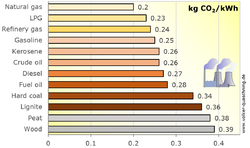Good point about the independence/security achieved through wood burning.
I would not burn just for the money savings but, if I were heating primarily with electric resistance heat, I couldn't relax knowing how much it was costing to really warm the cabin (there is no natural gas and I have no desire to install an oil or propane tank). Plus, I do like the woodcutting activity.
As far as expensing the equipment, I don't get that. I have a Stihl 026 with 16" and 18" bars from 1997 and some splitting mauls, wedges, peavy, etc, that I've had forever. The gas/oil are the primary expenses, the new saw was only $325. A chain easily lasts me 20-30 cords, both bars are still going strong, and the saw has been 100% reliable for 20 years other than needing a new fuel pick-up a couple of years ago (1/2 hour repair once I researched it). And I use it regularly for tasks other than cutting firewood. I did replace the sparkplug once, but only because I had never done so. It didn't run any differently with the new plug so I saved the old one as a spare. I would need a chainsaw whether I burned wood or not so I don't count the initial purchase price. I mean trees grow and trees fall, without a saw you're helpless.
My Stihl 026 starts on the third or fourth pull every time (first pull when it's warm) and has more power/rpms than when it was new. I brush/vac the airfilter every 4-5 cords and tension/sharpen the chain lightly each serious cutting session but the main maintenance task is the constant filling with gas/oil and bar oil. Even then, I bet my truck uses more fuel for firewood than the saw. I run the expensive Stihl synthetic pre-mix with standard 89 octane pump gas (10% alcohol). I leave it in there 24/7 unless I just happen to run out when I'm done cutting in which case I'll store it empty. Otherwise I fill it up when I'm done cutting. Good equipment properly used and cared for doesn't cost much in the big picture, the oil/gas can add up though.


 I am able to write off some of the costs associated with wood/related equipment since it is necessary to maintain the property and reduce damage to the rental property.....
I am able to write off some of the costs associated with wood/related equipment since it is necessary to maintain the property and reduce damage to the rental property.....
 Holy balls. 35/ you pick up at mine.
Holy balls. 35/ you pick up at mine.